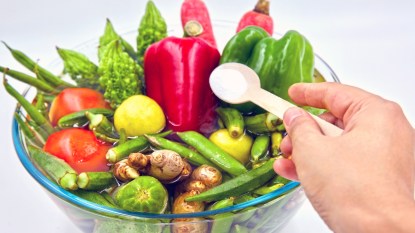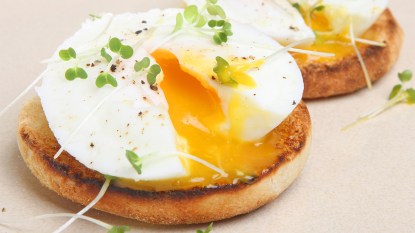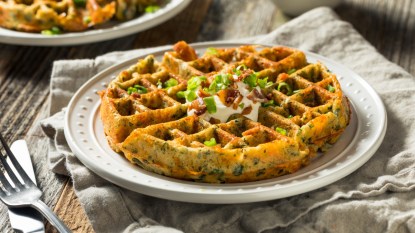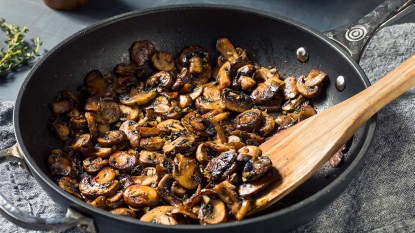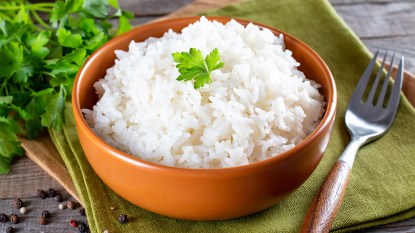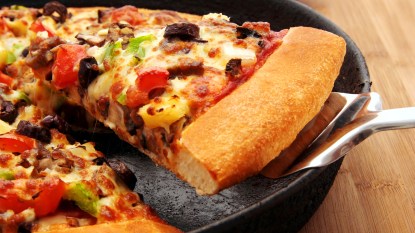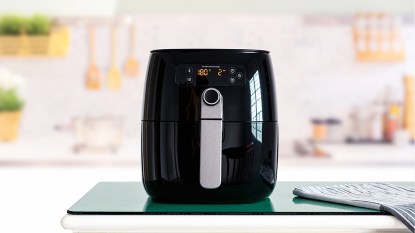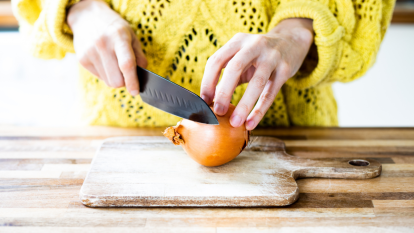Chef’s Easy Trick Fixes Warped Pans So They’re Good as New + Tips for Avoiding It
This *DIY on a dime* fix is cheaper than buying a new baking sheet or skillet!
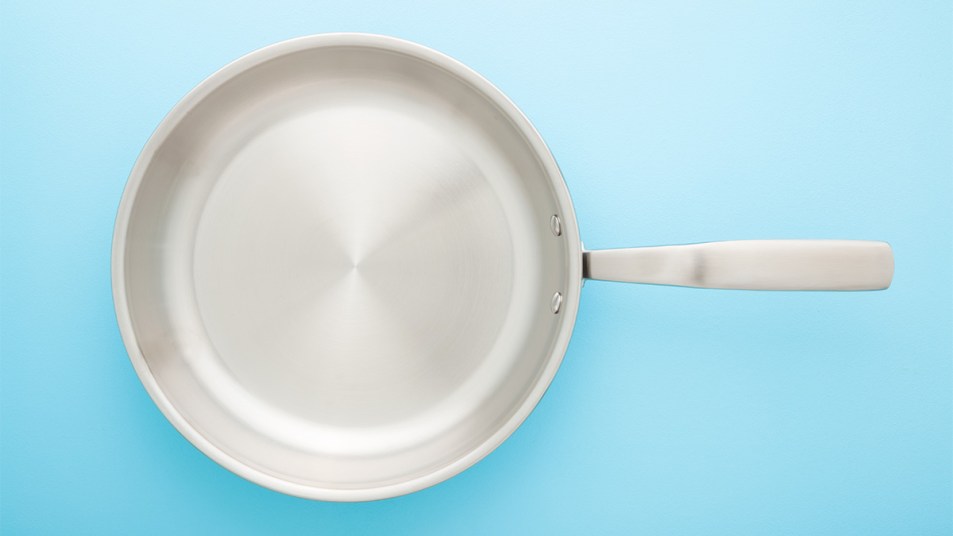
It’s the strangest thing: You’ve just used a perfectly good sheet pan to make a batch of cookies, and now it’s warped and wonky. Even a slight change — such as one corner tilting up a little more than the rest — is enough to render the pan pretty much useless. The same is true with stovetop pans. As soon as they become warped, they’re difficult to use and won’t cook food evenly. But don’t throw them out just yet! Keep reading for ways to fix those warped pans in about 15 minutes so you can continue using them for all of your cooking needs.
What happens when a pan warps?
When a cooking or baking pan warps, the bottom of the surface goes from flat to curved or raised. Not only does this make the pan wobbly, but Dean Harper, founder at Harper Fine Dining, notes it “can damage the pan’s heat retention, distribution and absorption.” While there’s no serious danger to using a warped pan, it’s best to avoid it as it prevents food from heating thoroughly on the stove or in the oven. Luckily, knowing the causes and tricks for fixing a warped pan ensures it stays in tip-top shape going forward!
5 common causes of pan warping
It’s always a good idea to go over your cooking habits and figure out what caused your pan to warp in the first place. Here are the five most common culprits:
1. The pan is overheated.
When a frying pan or sheet pan gets too hot, the metal is more malleable. Once you place a piping hot frying pan on a back burner or take a fiery sheet pan out of the oven, you’re exposing it to a huge temperature change. Sometimes, the difference between the hot pan and the room-temperature air is enough to cause warping.
2. The frying pan is too big for the burner.
Placing a large pan on a small burner means the burner will heat up the pan unevenly, which could result in warping.
3. The hot pan is rinsed with cold water.
This causes a quick change in temperature, which makes the metal expand and contract in strange ways. Not only can this ruin pans, but it also ruins the pan’s ability to heat food evenly. Instead, allow the pan cool down before washing or rinsing it with cold water to avoid warping due to temperature shock.
4. Your pan is too thin.
Thicker pans tend to do a much better job of conducting heat and maintaining an even temperature, according to experts at MDRN KITCHEN.
5. The pan is made of low-quality materials.
The quality of your pan is another key for determining whether it will warp. ‘”Low-quality pans are most susceptible to warping largely because the materials used lack the durability to withstand high heat and frequent use,” Harper explains. “Naturally, investing in high-quality pans made from materials like stainless steel, anodised aluminum or cast iron will prevent the likelihood of warping.” This is great to know when buying new pieces of cookware. But, in the meantime, there’s a good chance you can restore any of your current warped pans back to good shape!
How to fix a warped pan
While many methods exist for fixing a warped pan, there seems to be one that works the best: the wood method. The Joe’s Phenomenal YouTube channel does a great job of illustrating this technique. To use this method on a frying pan, you’ll need a piece of wood that’s about as long as the diameter of your pan. You will also need a flat, heat-resistant surface and a light mallet, preferably made of wood or rubber. If you don’t have a mallet, a hammer works, too.
First, heat your pan on your stove top on low heat for about five to 10 minutes. (Remember: Metal is more malleable when it’s hot!) When the pan is hot, set it on the heat-resistant surface using oven mitts. If the warping pushes outward, place it right side up. If the warping pushes inward, place it upside down.
Next, place the piece of wood inside the pan — or on the outside of the pan if it’s upside down. Tap the mallet on the wood over the area that is warped. The wood will help to evenly distribute the force of the taps so that you don’t create an even more irregular surface. (If you try to tap on the warped areas without the wood, you could create smaller irregularities, dents and dings.)
Keep tapping the wood over warped areas. Feel free to flip the pan over, center the wood on the metal, and tap further to make sure you eliminate any warping going the opposite way. If you still notice warping by the time the pan has cooled down, heat it again and repeat the process. Watch the video below to see the whole process in action.
How to fix a warped sheet pan
You can fix a warped sheet pan the same way that you fixed the frying pan. First, heat up the pan on low heat in the oven, then place it on a flat, heat-resistant surface. Place your block of wood over the warped area and tap with your mallet.
If it’s helpful, try using a longer block of wood to cover more of the surface. And if one corner of the sheet pan is popping up, you may need to hold the non-warped side of the pan with an oven mitt while tapping on top of the wood block on the other side. Once you have finished un-warping it, place something heavy (like book stacks) on the pan to hold down the edges as the pan cools.
For more tips on caring for your cookware staples, check out the stories below:
Culinary Pro: The Best Way to Season a Cast Iron Skillet + The Mistake Most People Make
This Genius Trick Makes Burned Baking Sheets Look Brand New
The Savvy Salt Trick That Cleans Burnt-On Food From a Wok (Or Frying Pan!) in Seconds
First For Women aims to feature only the best products and services. We update when possible, but deals expire and prices can change. If you buy something via one of our links, we may earn a commission. Questions? Reach us at shop@firstforwomen.com



